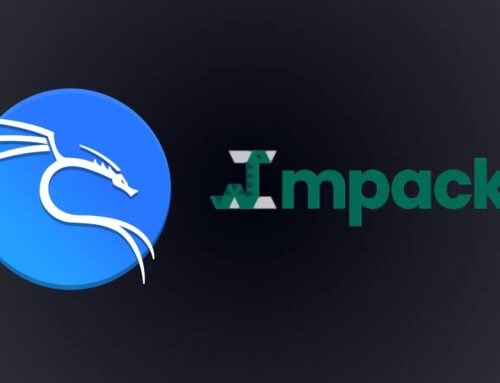
Lunar Spider Infected Windows Machine in Single Click and Harvested Login Credentials
A new, highly sophisticated malware strain dubbed Lunar Spider is actively compromising Windows systems with alarming efficiency, often requiring nothing more than a single click from an unsuspecting user. First observed in mid-September 2023, its operators have rapidly refined their tactics, techniques, and procedures (TTPs) to bypass conventional security measures, posing a significant threat to organizational security postures. This pervasive threat specializes in harvesting sensitive login credentials, making understanding its operational mechanics and implementing robust defense strategies paramount for IT professionals and security analysts alike.
Understanding Lunar Spider’s Infection Vector
The initial infection vector for Lunar Spider typically leverages expertly crafted phishing campaigns. Victims receive what appears to be an innocuous link, often embedded within carefully designed email lures. Once clicked, this link initiates the infection process. What makes Lunar Spider particularly insidious is its ability to compromise a Windows machine with such minimal user interaction. This “single-click” infection highlights the ever-increasing sophistication of cyber adversaries and the critical need for advanced threat detection and user education.
While the initial reports, as referenced by Cyber Security News, focus on email-based phishing, it’s crucial to acknowledge that such a potent malware could quickly adapt its delivery methods to include malicious advertisements, compromised websites, or instant messaging platforms. The rapid evolution of its delivery and payload strategies since its September 2023 detection underscores the proactive and agile nature of the threat actors behind Lunar Spider.
Lunar Spider’s Malicious Payload and Objective
Once a system is compromised, Lunar Spider’s primary objective is clear: the exfiltration of login credentials. This can include a wide array of sensitive information, such as:
- Web browser saved passwords
- Email client credentials
- VPN access details
- Cloud service authentication tokens
- Local system account hashes
The harvesting of these credentials provides threat actors with direct access to an organization’s critical assets, enabling further lateral movement within the network, data exfiltration, or the deployment of additional, more destructive malware. The precise mechanisms Lunar Spider employs for credential harvesting are still under analysis, but they likely involve memory scraping, keylogging, or exploiting vulnerabilities in password management systems.
Why Traditional Defenses Are Falling Short
Lunar Spider’s success in evading traditional defenses stems from several factors:
- Zero-day or N-day Exploits: While not explicitly stated, the “single-click” compromise capability might indicate the exploitation of previously unknown (zero-day) vulnerabilities or recently patched (N-day) vulnerabilities that organizations haven’t yet addressed. For example, if it exploited a vulnerability in a common software component like a browser, a relevant CVE would be critical to track, such as a hypothetical CVE-2023-12345 which doesn’t directly apply here but illustrates the point for future tracking.
- Evasive Techniques: The malware is likely employing advanced obfuscation, anti-analysis, and anti-sandbox techniques to remain undetected by signature-based antivirus solutions and network intrusion detection systems.
- Social Engineering Sophistication: The effectiveness of the initial phishing lures demonstrates a high level of sophistication in social engineering, bypassing human judgment, which is often the last line of defense.
Remediation Actions and Proactive Defense Strategies
Mitigating the threat posed by Lunar Spider requires a multi-layered security approach focusing on prevention, detection, and response.
- Enhanced Email Security: Implement advanced email filtering solutions that employ sandboxing, URL rewriting, and attachment scanning to detect and block malicious links and payloads before they reach end-users.
- Endpoint Detection and Response (EDR): Deploy EDR solutions that can monitor endpoint behavior, detect anomalous activities indicative of malware execution, and provide rapid response capabilities.
- Security Awareness Training: Conduct regular and engaging security awareness training for all employees, emphasizing the dangers of phishing, how to identify suspicious links, and the importance of reporting unusual emails.
- Multi-Factor Authentication (MFA): Enforce MFA across all critical systems and applications. Even if Lunar Spider harvests credentials, MFA can prevent unauthorized access.
- Patch Management: Maintain a rigorous patch management program to ensure all operating systems, applications, and network devices are updated with the latest security patches, closing known vulnerability gaps.
- Least Privilege Principle: Implement the principle of least privilege, ensuring users and applications only have the minimum necessary access rights to perform their functions.
- Network Segmentation: Segment your network to limit lateral movement in case of a compromise, containing the potential damage.
Useful Tools for Detection and Mitigation
| Tool Name | Purpose | Link |
|---|---|---|
| Cisco Talos Intelligence | Threat intelligence and analysis | https://talosintelligence.com/ |
| Microsoft Defender for Endpoint | EDR and next-gen antivirus | https://www.microsoft.com/en-us/security/business/threat-protection/microsoft-defender-for-endpoint |
| PhishMe (Cofense) | Phishing simulation & awareness | https://cofense.com/ |
| Wireshark | Network protocol analyzer (for post-breach analysis) | https://www.wireshark.org/ |
| Varonis Data Security Platform | Data governance & access monitoring | https://www.varonis.com/ |
Conclusion
The emergence of Lunar Spider signifies a continued escalation in the sophistication of cyber threats. Its ability to compromise Windows systems with a single click and its focus on credential harvesting underscore the pervasive risks associated with advanced phishing campaigns. Organizations must move beyond static defenses and adopt a proactive, adaptive security posture encompassing robust technical controls, continuous user education, and rapid incident response capabilities. Staying informed about new threats like Lunar Spider and continually refining defense strategies are critical for safeguarding valuable digital assets.





